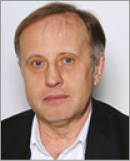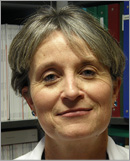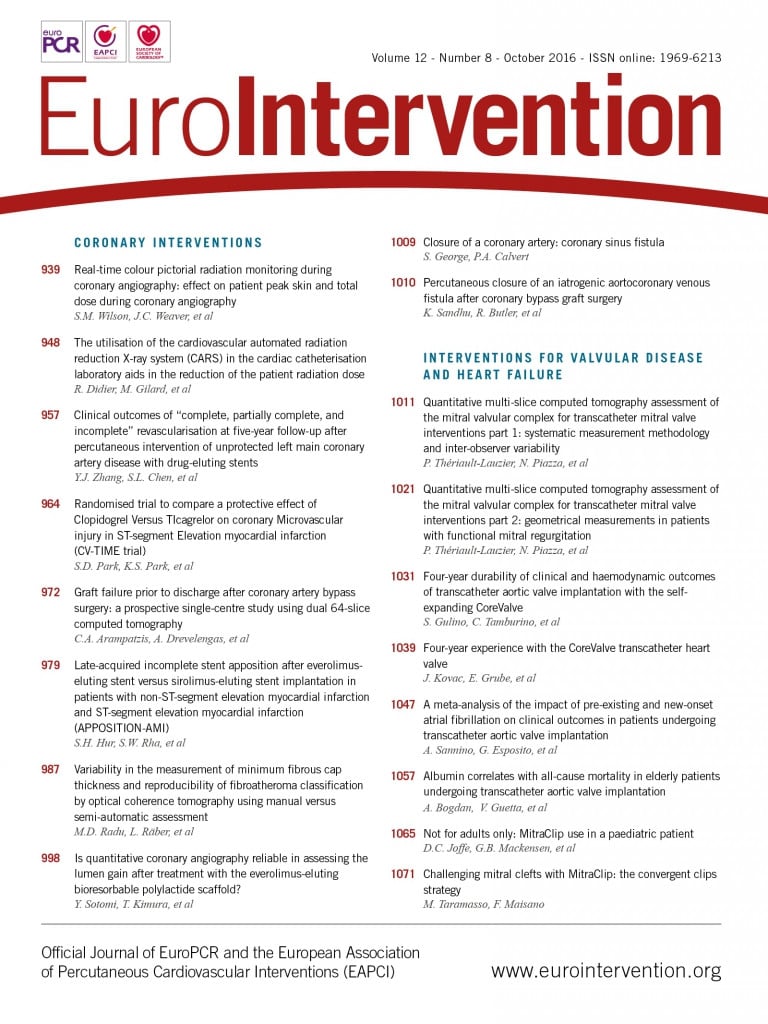EAPCI Focus on the EAPCI Valve for Life initiative update
Adam Witkowski, Martine Gilard
Chair, and co-chair, respectively, of the EAPCI Valve for Life Committee
France and Poland were the first two countries to benefit from the new EAPCI initiative Valve for Life. This programme is addressed to ESC member countries with a lower penetration of transcatheter valve interventions. The long-term strategy is to increase transcatheter treatment of severe valvular heart diseases by 20% by 2020. Thanks to the EAPCI’s financial support in Poland under the umbrella of the Association on Cardiovascular Interventions of the Polish Cardiac Society, the Valve for Life public media campaign in 2015 focused on TAVI. Co-ordinated by Dariusz Dudek and Adam Witkowski, a public campaign and other important activities (e.g., special sessions with invited medical authorities and journalists dedicated to the development and funding of transcatheter valve technologies held at major cardiology meetings) were successfully launched – resulting in a substantial increase in TAVI procedures from 452 in 2014 to 670 in 2015, increasing the TAVI penetration per million inhabitants from 12 to 17. Growth in TAVI in Poland was higher (48%) than the 20% predicted by the EAPCI up to 2020! Using traditional and social media to focus on patients aged 75+ and their families, we reached more than 11 million Polish citizens, all the while much improving their awareness of TAVI.
In France, the number of implanted valves for aortic stenoses is increasing constantly, e.g., from 150 in 2006 to 5,500 in 2014. However, when compared to other European countries such as Switzerland or Germany, the percentage of implanted patients is still lower in France. Similarly, the percutaneous treatment of mitral regurgitation is very low. One obstacle is the limited number of reimbursements. Thanks to EAPCI financial support, we plan to maintain two registries to show to the French health authorities the real number of patients who are in need of TAVI or mitral percutaneous treatment.
1) For TAVI, we plan to conduct a prospective registry during September and October 2016 (in the 45 implant centres) which will include all patients hospitalised for aortic valve stenoses. Baseline data and allocated treatment (surgery, TAVI or medical treatment) and one-year survival information will be analysed. Regional meetings will be organised among interventional cardiologists and general practitioners to explain TAVI indications better. These meetings will be organised in each region where the prospective registry will illustrate discrepancies between the number of aortic stenosis patients and the number of TAVIs performed.
2) Regarding mitral percutaneous treatment, we plan to conduct a prospective registry during a two-year period in the implant centres (MitraClip, percutaneous valve implantation, etc.) between September 2016 and September 2018 in order to illustrate the real number of patients requiring percutaneous mitral treatment in case of primary or secondary MR.
EAPCI, in co-operation with industry partners, will further continue its efforts to promote aortic and mitral valve transcatheter procedures within Europe.
This initiative has been made possible thanks to an educational grant from Edwards Lifesciences, Abbott Vascular and Medtronic.

Adam Witkowski
Chair of the EAPCI Valve for Life Committee

Martine Gilard
Co-chair of the EAPCI Valve for Life Committee
| NEWS ■ Boost your career on LinkedIn! EAPCI is proud of its very active online communities: discover them now, extend your professional network and benefit the most from these communities! www.escardio.org/eapci ■ Did you miss the general cardiology webinar on multidisciplinary Heart Team discussion on how to manage a patient with dyspnoea with Professors Irene Lang, David Jimenez and Hervé Mal, and Dr Philippe Meyer? Watch it now online and for free at: http://www.escardio.org/Education/E-Learning/Webinars/General-cardiology/heart-team-discussion ■ Watch the EAPCI webinar recording on “Coronary and structural catheterization procedures in patients on oral anticoagulation: best practice and what is the role of antidotes” with Prof. Harald Darius and Dr Jorge Ferreira. ■ Free access at http://www.escardio.org/Education/E-Learning/Webinars/Interventional-cardiology/coronary-and-structural-catheterization-procedures |

